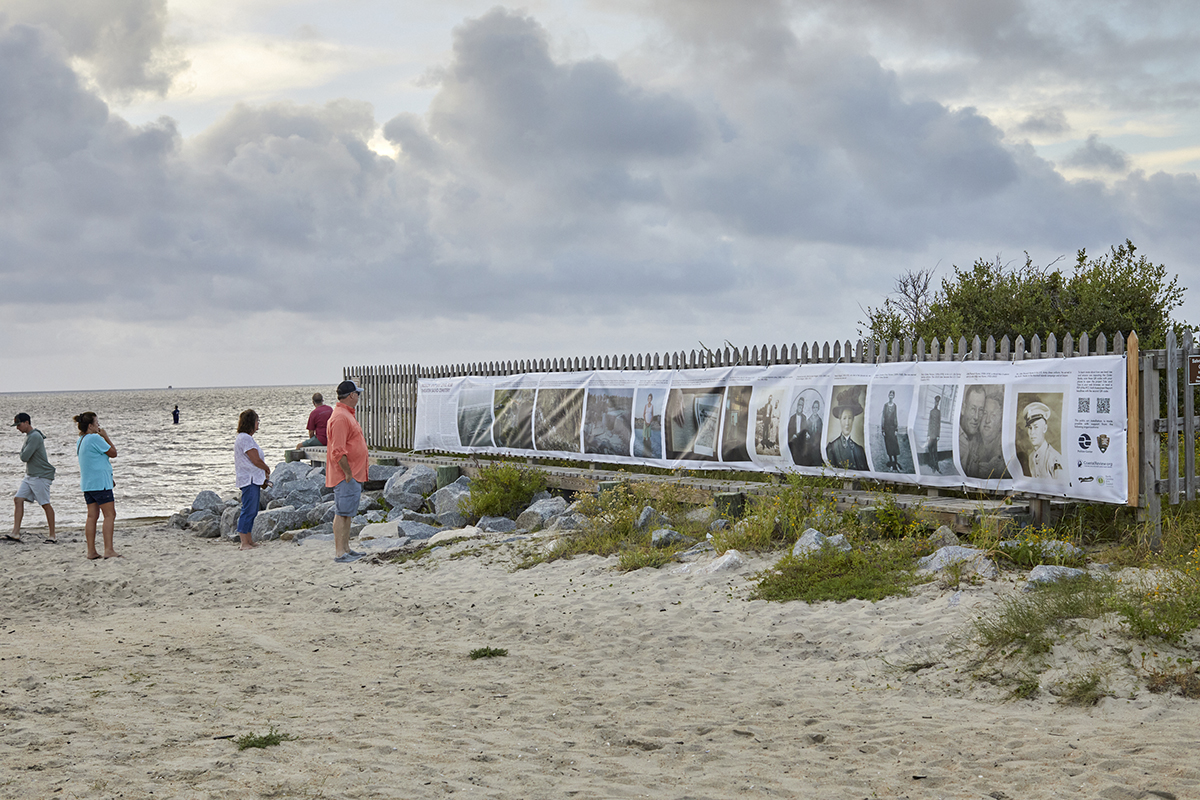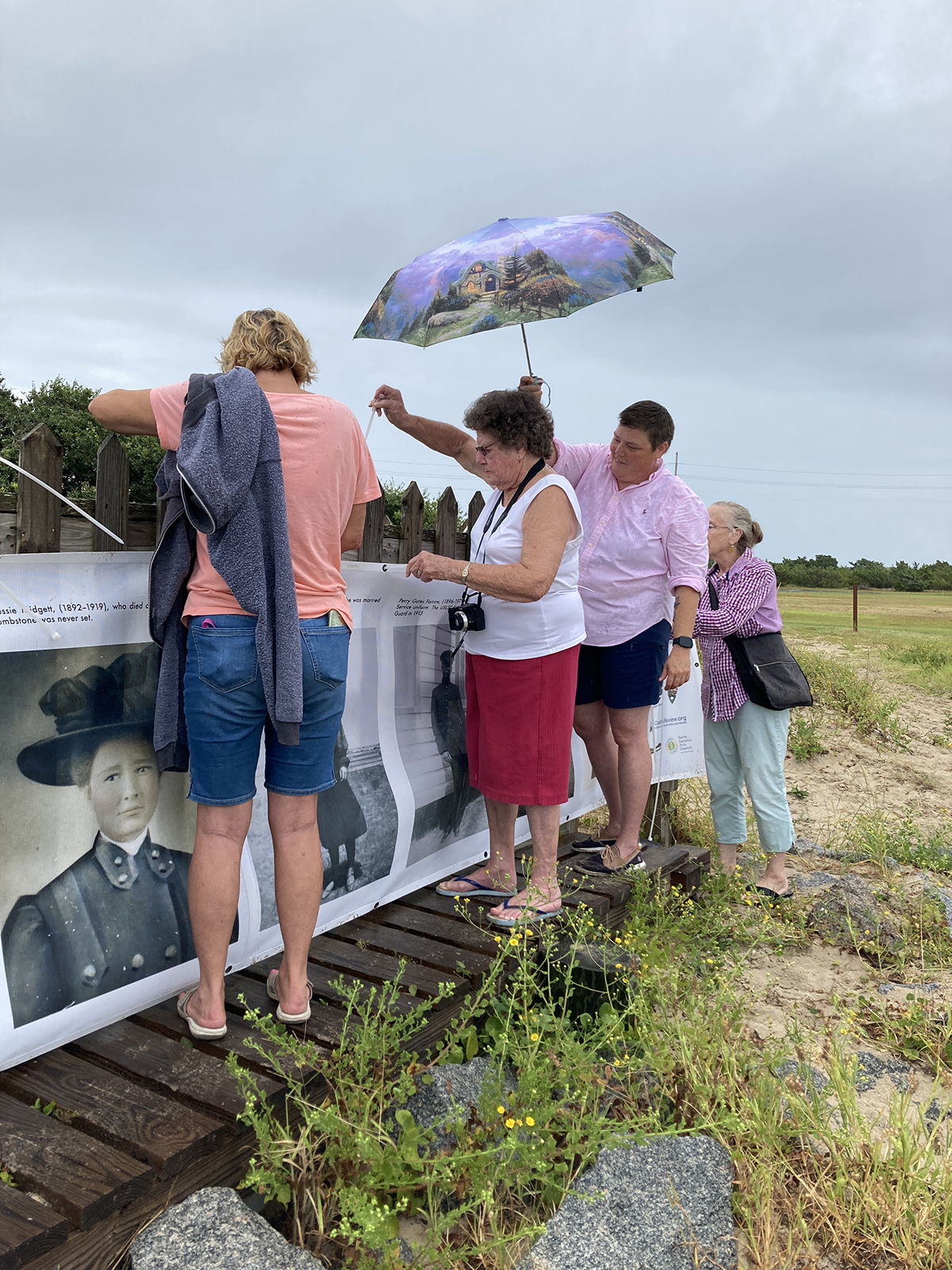
Visitors who stop at the Salvo day use area, a part of Cape Hatteras National Seashore, almost certainly notice the small cemetery with a few dozen graves perched right on the edge of the Pamlico Sound.
The Salvo Community Cemetery on Hatteras Island dates back generations and has long been at risk of eroding away, even losing graves to the sound as a result of erosion.
Supporter Spotlight
There have been efforts In recent years to save the cemetery, including putting in a bulkhead in 2018, and earlier this year, the National Park Service announced plans for improvements, but the descendants are acutely aware it’s only a matter of time and tide before it’s all under water.

“They say in years to come this is really not going to be an island. It’ll be all water,” Earl Whidbee told Durham photojournalist Justin Cook for his photography and reporting project, “Tide and Time: Sea Level Rise and Solastalgia on North Carolina’s Outer Banks.”
“Tide and Time” was first published in May in Coastal Review in partnership with Pulitzer Center’s nationwide Connected Coastlines and is now an outdoor exhibit at the cemetery, on display since mid-September.
Cook recapped in an interview that he spent four years working on “Tide and Time,” a documentary, photography and reporting project that investigates the effects of sea level rise and erosion, as told through a small cemetery on the edge of the Pamlico Sound that is eroding into the sound.
“It investigates the people with deep familial connections to that piece of land, the ecosystems around it, and the psychological impacts of that change in their daily lives as opposed to the big, dramatic, short-term effects of hurricanes. The project, instead, investigates the slower creep of climate change and everyday lives of people,” he said.
Supporter Spotlight
Cook introduces several descendants of those buried in the Salvo Community Cemetery, he talks to them about sea level rise, storms, what they’ve lost and what they remember. He also speaks with scientists about climate change and delves into the term, solastalgia, which Cook said philosopher Glenn Albrecht “defined it as a sense of loss, homesickness and distress specifically caused by environmental change around someone’s home and a sense of powerlessness over that change.”
With help from descendants and locals, Cook extended his project into the free, outdoor exhibit at the cemetery. Installed in mid-September and on display from 9 a.m. to dark, the long banner fastened on one side of cemetery’s fence documents the accelerating effects of climate change and erosion on North Carolina’s Outer Banks. There is scientific information, photographs and portraits of those buried at the cemetery on the banner.
Cook is a descendant himself through his grandfather, the late William Albert Best Jr. from Stumpy Point in Dare County.
The banner exhibit was a natural extension of “Tide and Time” and was inspired by Photoville, a New York-based nonprofit organization founded in 2011. The organization holds an annual photography festival in public spaces and Photoville FENCE, a year-round public photography project displayed in major parks and downtowns across the continent, which has made stops in Durham.
Cook said anyone can engage with the Photoville exhibit because they’re free and in a public space. This also give people an opportunity to confront the work and the work confront them.
He was out for a walk in Durham and thought that a Photoville FENCE exhibit of “Tide and Time” on the cemetery fence would “be wild.” He said he pitched the idea to locals on Salvo Community Cemetery Friends and Descendants Facebook page and “the buy-in was immediate.”

Cook designed the banner with help from the community, and collaborated with descendant Robin Holt on the text – her research and his reporting – and Photoville walked him through the process of getting the banner printed.
That buy-in from the community and having a hyper-local focus is an important element of his work, a large part of why he found value in working with Coastal Review to publish his project earlier this year, he said.
The Pulitzer Center’s mission, especially with Connected Coastlines, is to infuse local news outlets, particularly smaller ones, with reporting projects that require resources often beyond the ability of the small publications. They either don’t have the staff or time to invest in a project like this, Cook said, adding, “It actually just came together perfectly and just made a lot of sense, the impact was hyper local, which is something that’s really important to me as well.”
He explained that the longer he does documentary work, the stronger he feels that the community he’s doing the work in should garner the most impact from it.
“For this (project) to appear in a coastal North Carolina publication, that to me was in line with those values and I think it made it way more possible for me to actually pull off the banner exhibit as well,” he said.
Cook explained that he wanted to have an exhibit on the Outer Banks, but then the pandemic happened. While there was the option to spend thousands on nicely printed, framed prints to hang in a gallery, he opted for something completely different that would open to the public and safe during the pandemic.
He said when he pitched the idea for the banner to those he had been working with, they were already familiar with Coastal Review and being backed by the Pulitzer Center gave the project legitimacy.
“Having a national institution backing this (project) and publishing in a local publication that had familiarity, was just a real sweet spot for the work,” he said.
The reporting project and fence exhibit have been made possible by the Pulitzer Center on Crisis Reporting Connected Coastlines Initiative, The North Carolina Arts Council, the Photoville FENCE exhibit, The Coastal Review Online, and The National Park Service.







